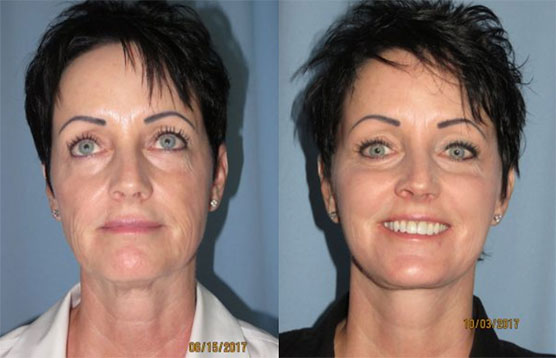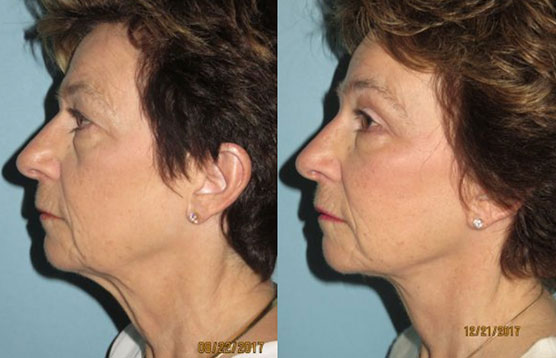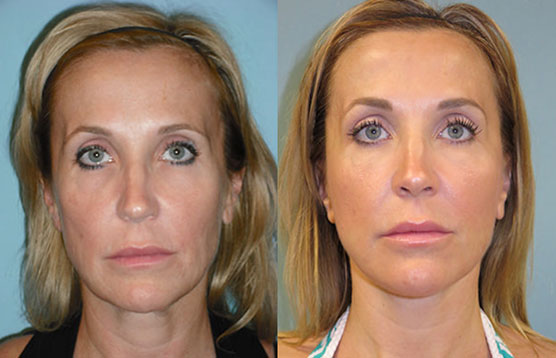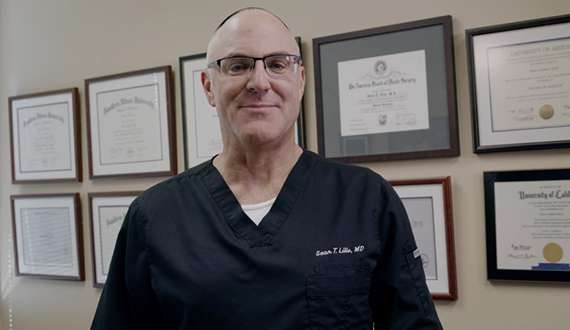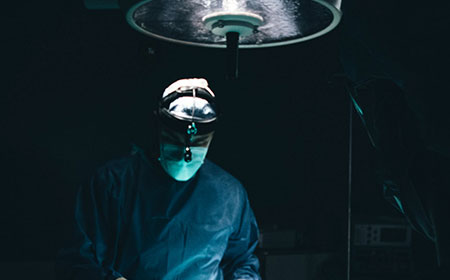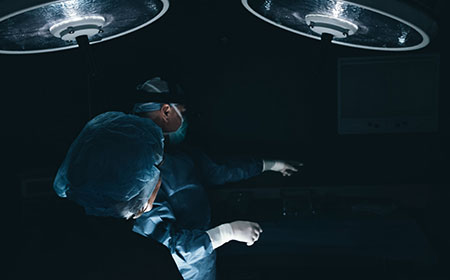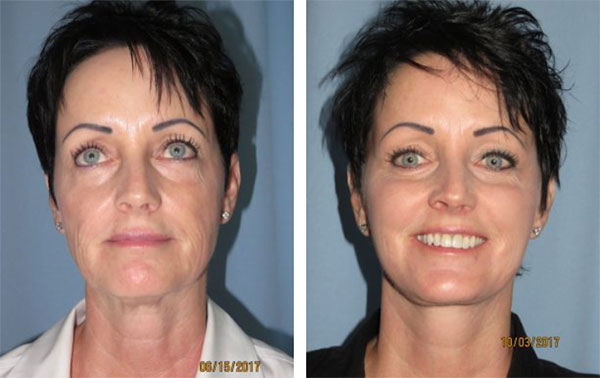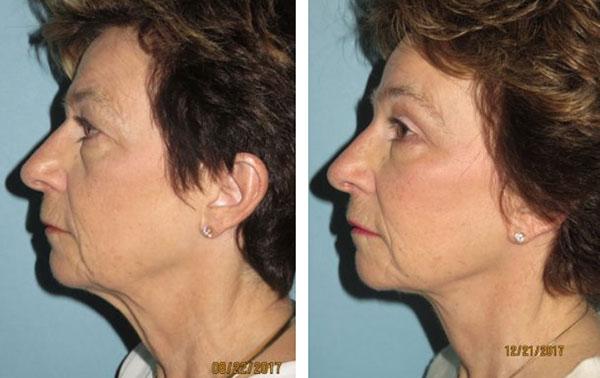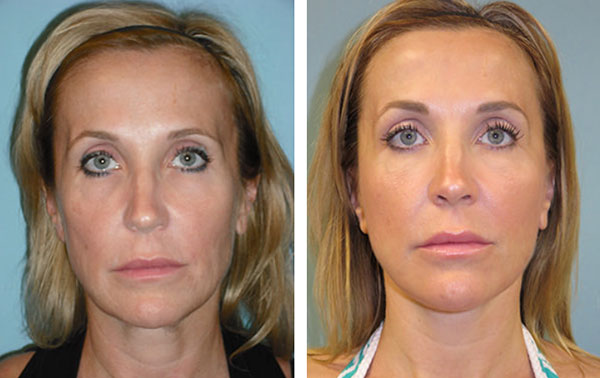-
Mini Facelift Recovery
You should be up and about in a day or two, but plan on taking it easy for the first week after surgery. Be especially gentle with your face and hair, since your skin will be both tender and numb, and may not respond normally at first.
The mini facelift surgery requires only a few days of recuperation, because the swelling and bruising are minor compared to other operations. Within a few days, you can return to work and resume routine activities. The swelling in your face will subside three to five days after the surgery, and the bruising will be barely visible.
-
Mini Facelift Home Aftercare
Dr. Lille will give more specific guidelines for gradually resuming your normal activities,such as: avoid strenuous activity, including sex and heavy housework, for at least two weeks (walking and mild stretching are fine); avoid alcohol, steam baths, and saunas for several months. Above all, get plenty of rest and allow your body to spend its energy on healing.
-
Scarring
At the beginning, your face may look and feel rather strange. Your features may be distorted from the swelling, your facial movements may be slightly stiff and you’ll probably be self-conscious about your scars. Some bruising may persist for two or three weeks, and you may tire easily. It’s not surprising that some patients are disappointed and depressed at first.
By the third week, you’ll look and feel much better. Most patients are back at work about ten days to two weeks after surgery. If you need it, special camouflage makeup can mask most bruising that remains.
-
Pain
There isn’t usually significant discomfort after surgery; if there is, it can be lessened with the pain medication prescribed by your surgeon. (Severe or persistent pain or a sudden swelling of your face should be reported to Dr. Lille immediately.) Some numbness of the skin is quite normal; it will disappear in a few weeks or months.
Keep your head elevated and as still as possible for a couple of days after surgery, to keep the swelling down.
If you’ve had a drainage tube inserted, it will be removed one or two days after surgery. Bandages, when used, are usually removed after one to five days. Don’t be surprised at the pale, bruised, and puffy face you see. Just keep in mind that in a few weeks you’ll be looking normal.
Most of your stitches will be removed after about one week. Your scalp may take longer to heal, and the stitches or metal clips in your hairline could be left in a few days longer.
-
Mini Facelift Results
The chances are excellent that you’ll be happy with your Mini Facelift, especially if you realize that the results may not be immediately apparent. Even after the swelling and bruises are gone, your hair may be thin and your skin may feel dry and rough for several months. Men may find they have to shave in new places-behind the neck and ears — where areas of beard — growing skin have been repositioned.
You’ll have some scars from your facelift, but they’re usually hidden by your hair or in the natural creases of your face and ears. In any case, they’ll fade within time and should be scarcely visible.
Having a Mini Facelift in Scottsdale doesn’t stop the clock. Your face will continue to age with time, and you may want to repeat the procedure one or more times-perhaps five or ten years down the line. But in another sense, the effects of even one facelift are lasting; years later, you’ll continue to look better than if you’d never had a facelift at all.
-
Mini Facelift Cost
The cost of a Mini Facelift is determined after taking several factors into account. When calculating the price of a Mini Rhytidectomy, total surgical time, anesthesia costs, techniques used, and amount of tissue removed are all considered.
-
Schedule A Mini Facelift Consultation
Contact us and schedule a consultation with board-certified plastic surgeon Dr. Sean Lille to find out whether you are a good candidate for a mini facelift in Scottsdale. We will be happy to help you achieve the results you’ve been searching for.
